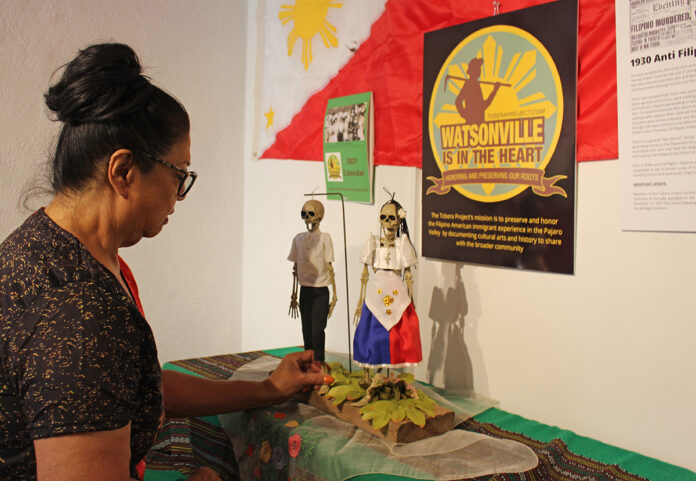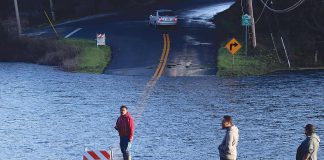
Around this time last year, I wrote that 2020 was “a year that changed the world.” And I stand by that. But in my opinion, 2021 was just as challenging, if not harder. Sure, we got to see friends and family again, maybe go to events or on a trip. But the world remains unstable. The coronavirus still rages, our political sphere is more divided than ever and society as a whole seems to be reeling from the trauma of the last two years.
Despite this, I’ve tried to look back on 2021 with a more positive eye. A lot of good things happened, worldwide and here locally, that I am grateful to have seen, and covered for the Pajaronian. Here are some highlights:
The Arts Persevere
2020 was a sad year for art lovers like me. Exhibits, music and theater were either canceled or shown virtually. This is why it was such a treat for the arts to come back in 2021.
I’ve enjoyed covering in-person shows at Pajaro Valley Arts once again. Exhibit Coordinator Hedwig Heerschop is always sure to let me know what is happening at the gallery. This year’s “Mi Casa es Tu Casa,” curated by Shirley Flores-Muñoz, was probably their most extensive and meaningful one yet.
The performing arts are slowly coming back as well. Educational institutions, from local high schools to Cabrillo College, are once again holding live music and theater productions. I’ve enjoyed attending and covering them, including Watsonville High School Drama’s latest play.
“Watsonville Brillante,” a massive mural project headed up by Kathleen Crocetti, has continued during the pandemic. Staff and volunteers are currently working on fabricating the fourth and final mosaic by Watsonville artist Juan Fuentes. The horizontal sections of the mural will feature other local artists. It’s been incredible to follow the trajectory of this project over the past year.
Castro Adobe Reopens
I had never properly visited Castro Adobe before covering its reopening this year. After nearly two years of being closed to the public for construction, South County’s only State Park is back in action.
Located on a hill off of Larkin Valley Road and overlooking the Pajaro Valley, Castro Adobe’s main draw is a historic, two-story hacienda built between 1848-49 by Juan Jose Castro. It is one of the few adobes left in the Monterey Bay area.
The restoration of Castro Adobe has been a long time coming. For decades people worked to save the iconic structure, and designate it as a State Park. I received a wonderful private tour from Charlie Kieffer, a docent at the park and a direct descendent of the Castro family. Kieffer told me that they hope to make the park into a “living museum,” with everything from tortilla making in the restored cocina to cow-roping demonstrations and dances in the adobe’s upstairs fandango room.
Anniversaries Galore
A number of Watsonville-based businesses and organizations reached major milestones this year. Esperanza de Valle, a nonprofit dance group, celebrated 40 years in Watsonville. They specialize in Mexican dance forms, working with master teachers and traveling to Mexico multiple times. I spoke with co-founder and executive director Janet Johns, who helped coordinate a weekend-long 40th-anniversary concert at Cabrillo College.
Another local organization, Watsonville Wetlands Watch, observed 30 years in 2021. Formed when a group of concerned residents came together to save Watsonville’s wetlands from urban development, the nonprofit has kept expanding over the years. It is now a hub for environmental education, restoration projects, trail building and more.
Organic vegetable grower Lakeside Organic Gardens celebrated its 25th anniversary this year. The produce company is now the largest family-owned and operated 100% organic vegetable grower/shipper in the U.S., producing year-round crops that are sent across North America. Owner Dick Peixoto spoke about the challenges and rewards of leading the organic agriculture revolution in the region.
Watsonville’s Climate Plan
At a Watsonville City Council meeting on July 6, outgoing Director of Public Works Steve Palmisano put forth a resolution endorsing the city to move its goal of net-negative carbon emissions from 2045 to 2030. And at another meeting on Oct. 26, the council approved the city’s 2030 Climate Action & Adaptation Plan. Both of these steps were monumental, and solidified Watsonville’s role as a leader in climate action in California. Covering this subject, I learned a lot about what will be needed to combat the effects of climate change heading into the future. I am proud of this city for stepping up.
Portuguese Community
One of my final stories this year was about Watsonville finally securing a sister city in Portugal. It was officially confirmed in mid-December. I spoke with then-mayor Jimmy Dutra, who led the effort, and a number of local Portuguese community members who were all very excited about the designation.
A number of immigrants from São Jorge Island have landed in Watsonville over the years, which made the coastal town of Velas the “perfect choice” for a sister city. Personally, I’m impressed at how this small community has so many sister cities all over the world. It really does connect us to the bigger picture.











